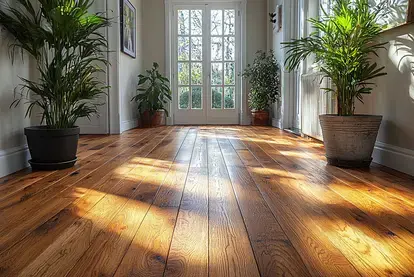
How to Deodorize a Room (and Your Whole House)
Contact COIT for a professional cleaning!
Is there a lingering smell in your home you just can’t seem to shake?
Whether it's last night’s dinner, your furry friend’s accidents or a mysterious musty odor coming from the basement, bad smells can make your home feel anything but fresh.
Here at COIT, we’ve helped thousands of homeowners tackle tough odors. And while candles and plug-ins might give you a temporary fix, the key to a fresh-smelling home is eliminating the source of the smell, not just covering it up.
In this guide, we’ll show you how to deodorize a room and your entire house—naturally and effectively.
Why Does My House Smell? Common Odor Sources
Before you can get rid of a smell, it helps to know what’s causing it. Some of the most common culprits include:
- Pets: Accidents, fur, and dander
- Cooking odors: Grease, strong spices, or burnt food
- Garbage and compost: Especially in kitchens or bathrooms
- Smoke: Cigarettes, fireplaces, or even burnt toast
- Mold and mildew: Damp basements, bathrooms, and laundry rooms
- Dirty carpets or upholstery: These trap smells over time
- HVAC systems: Dusty vents or dirty filters can circulate bad air
The good news? No matter the source, there’s a fix.
How to Deodorize a Room (Step-by-Step)
Whether you’re dealing with a single stinky space or your entire home, here’s how to deodorize a room the right way:
1. Air It Out
Open windows and doors to let fresh air in. Use fans to push old, stale air outside. Even 15 minutes can make a big difference.
2. Change Your Air Filters
HVAC filters trap dust, dander, and odors—but only if they’re clean. We recommend replacing them every 90 days (or more often if you have pets).
3. Clean Soft Surfaces
Curtains, carpets, throw pillows, and upholstered furniture all absorb smells. Wash or steam-clean them regularly to keep odors from building up.
4. Use Baking Soda
This natural odor absorber is perfect for carpets, shoes, trash cans, and even your fridge. Sprinkle it on a surface, let it sit for a few hours, and vacuum it up.
5. Try Vinegar Bowls
White vinegar neutralizes odors in the air. Leave small bowls around the house (especially in musty corners or the kitchen) overnight.
6. Simmer a Stovetop Freshener
Add cinnamon sticks, orange peels, or cloves to a pot of water and simmer for an hour. It smells great—without synthetic chemicals.
7. Set Up Charcoal or Coffee Grounds
Activated charcoal bags or bowls of coffee grounds can absorb strong smells in enclosed spaces like closets, drawers, or even cars.
How to Deodorize a House, Room by Room
Let’s break it down so you can tackle each area of your home more efficiently.
Bedroom
- Wash your bedding weekly
- Sprinkle baking soda on mattresses, then vacuum
- Use lavender essential oil on your pillowcases or in diffusers
Bathroom
- Scrub sinks, drains, and toilets (bacteria = smell)
- Use vinegar and baking soda to clean pipes
- Leave a bowl of baking soda or a charcoal bag on a shelf
Kitchen
- Empty your garbage and compost daily
- Clean your fridge, microwave, and oven regularly
- Boil lemon slices and water to neutralize cooking smells
Living Room (Pet Central)
- Vacuum your rugs and couches
- Wash pet bedding weekly
- Use an enzyme cleaner to remove urine smells from carpet or upholstery
Laundry Room
- Wipe down washing machines (especially front-loaders)
- Keep a box of baking soda or charcoal near the dryer
- Make sure rooms stay dry—dehumidifiers help a lot
Basement or Attic
- Use a dehumidifier to reduce mustiness
- Check for mold or mildew
- Store fabrics or cardboard in airtight containers
Natural Deodorizing Methods That Actually Work
If you’re looking for chemical-free solutions, try these natural odor busters:
Product | How to Use |
Baking Soda | Sprinkle on carpets, place in bowls around the house |
White Vinegar | Leave bowls in rooms, or spray onto surfaces |
Activated Charcoal | Use in bags or bowls in musty or small spaces |
Essential Oils | Add to water for sprays or use in diffusers (lavender, lemon, peppermint) |
Houseplants | Spider plants, peace lilies, and ferns naturally improve air quality |
When to Call the Pros
If you’ve tried every trick in the book and the smell is still there—it’s time to bring in the experts.
At COIT, we’ve spent decades helping homeowners get rid of stubborn smells caused by:
- Pet accidents
- Mold and mildew
- Cigarette smoke
- Skunk spray
- Fire and water damage
We use non-toxic, non-flammable, and ozone-safe deodorizers to restore your space—safely and effectively.
Want a fresh start? Find a COIT location near you.
FAQs: Deodorizing a Room or House
How long does it take to deodorize a room?
How long it takes to deodorize a room depends on the severity and source of the odor. In most cases, a room can start to smell fresher within a few hours using proper ventilation, natural odor absorbers like baking soda or vinegar, and regular surface cleaning. For deeper smells like smoke or mildew, professional deodorizing may be needed.
What absorbs smells in a room?
If you're wondering what absorbs smells in a room, baking soda, white vinegar, activated charcoal, and coffee grounds are some of the most effective natural odor eliminators. These substances don’t just mask bad smells—they neutralize them by absorbing particles from the air and surfaces.
What’s the best way to deodorize a house fast?
The best way to deodorize a house fast is to open all windows for cross-ventilation, run fans to circulate fresh air, and place bowls of vinegar or baking soda in key areas to absorb lingering odors. For a quicker refresh, wash linens and soft surfaces, take out the trash, and simmer a pot of citrus or spices on the stove.
What can I use instead of air fresheners?
Instead of using artificial air fresheners to deodorize a room, try simmering natural ingredients like lemon peels and cloves, using an essential oil diffuser, or spraying a homemade mix of water and essential oils. These options are safer for pets and kids and won’t just cover odors—they help eliminate them.
How do I deodorize a house naturally without chemicals?
To deodorize a house naturally without chemicals, rely on ingredients like baking soda, vinegar, and essential oils, which neutralize odors without introducing synthetic fragrances. You can also use houseplants to improve indoor air quality and keep your home smelling fresh year-round.
Can I deodorize a room without opening windows?
Yes, you can deodorize a room without opening windows by using air purifiers, dehumidifiers, and odor absorbers like charcoal bags or baking soda. While fresh air is ideal, these tools can still help remove unpleasant smells and improve indoor air quality when windows aren’t an option.
Final Thoughts
You don’t need to live with a smelly home. With the right mix of cleaning, ventilation, and natural deodorizers, your space can smell fresh every day. And when odors go beyond surface-level? That’s where we come in.
Call COIT for a deep clean that removes odors at the source—not just masks them.



